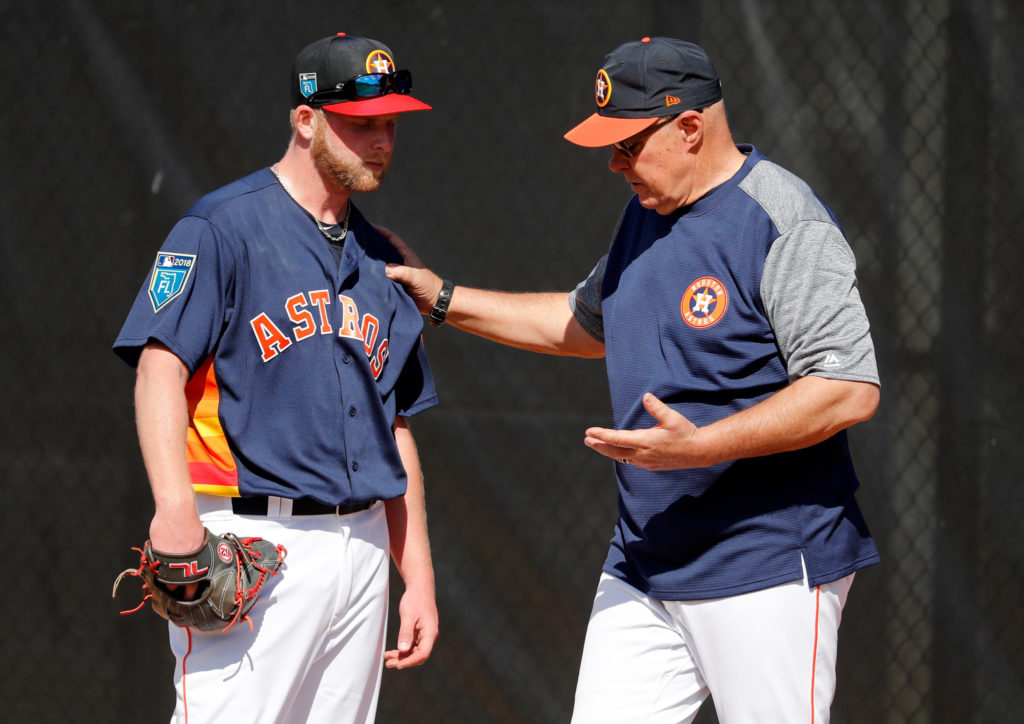
Pitching is where the game starts and where the game ends. It’s one of the two positions that touches the ball on every single play. It fuels championship teams. It puts out rallies and keeps runs off the board. It wins more than it loses. It’s a science and an art. It’s mental and it’s physical. It’s simple and complex. There are no rules other than where you stand and where you must throw. Everything else is up to you.
Our success on the mound depends on a multitude of factors:
- Movement solutions
- Stuff
- Command
- Competitive mindset
- Ability to handle adversity
- Physical fitness, athleticism
- Belief in ourselves
- Being good when we’re bad
- Ability to learn and adapt quickly
- Growth mindset
- Habits, routines, disciplines
- Work ethic
We will never master pitching. We can only strive to. We are always going to have to fight to bring out the best version of ourselves on a daily basis. We will never be great at everything, but we need to be great at something. What is your formula to send hitters back to the dugout? What are the constraints you face? What do you aspire to be?
Pitchers are not porcelain. They need physical, mental, and emotional callouses. They need to be stressed, tested, and put into positions where they will fail at some point. Our goal is to design an environment that nurtures growth, celebrates work, and does not condemn failure. We are a product of the environment in which we come from. Everything matters.
What we see from the body originates in the mind. What we believe is what’s going to show up. What other people have told us is important will become what is important to us. You cannot make changes until you figure out their internal blueprint. If what they perceive does not agree with what you believe, you need to find a way to communicate it in a way they will understand. We are constantly selling. You need to be prepared to sell a vision. If we’re going to take away something they believe in, we need to give them something to believe in. It won’t be perfect. It will be messy. Most of your interventions will take time. Some will never manifest. All you can do is be present, listen intently, and talk in a way they understand you’re there to work with them. Everyone needs people they can trust. Without it, we have nothing.
The arm is everything. Health is a barrier we must face on a constant basis. It is the biggest limiting factor we have as a coach. If our players are not healthy, they cannot compete. They cannot help us win. Everything we do must help the arm capture energy more efficiently. Injuries are not accidents. They are the end result when stress exceeds capacity. We must stress the system in ways that create positive adaptations, but we must be conscious of what is too much. How we move sets the floor. How well we can build pitchers on top of robust movement solutions sets the ceiling. This starts with health. Baseball sucks when the arm hurts. Everything we do must set the arm up in a position in which it can thrive.
Movement starts with the middle. What we see at the extremities can be traced back to the middle. The first move sets up the sequence. The last move gives us information about the first move. The middle is where we see variance. We’re trying to create leverage. This depends on how well we can create momentum, stop our momentum, and sequence our body to create for a clean transfer of energy.
Robust movement solutions form from a delicate balance of stability and chaos. Sometimes we need to slow things down and bring attention to certain points in the delivery. Other times, we need to make things weird. Pitching is complex. Competing is messy. If it doesn’t survive unpredictable conditions, it won’t show up when competing in unpredictable environments. Sometimes this requires a step back. Other times, it requires a step forward. How many different ways can we be good? Accomplish the same task? Navigate complexity and come away with simplicity?
The pitcher hitter confrontation is a war. Every single pitch has a winner and a loser. There are hammer and anvils. Which one are you when your back is against the wall? Are you able to take punches? Return punches? When do you crumble? How well can you slow the game down? When does it speed up? What anchors you down when everything around you starts to fall apart?
Your habits, routines, and disciplines will either be your greatest benefit or detriment. Once you make the decision to be great, your decisions are already made for you. Eliminate decision making. Show up. Be consistent with your training. Accept the bad days. Know your strengths. Attack your weaknesses. Find ways to compound interest. Make daily deposits. See every situation as an opportunity to learn and grow. It won’t happen on your time, but it doesn’t mean you stop putting in time.
The best version of yourself won’t always show up. Your heart will be broken. People you trusted will let you down. The journey will take longer than expected. You will be tested in ways you never could have imagined. The fine print will never appear larger. You will traverse the highest of highs and the lowest of lows. These are guarantees. They are also the price of entry. If you have the resilience to overcome the fine print of chasing your dreams, you will have the fortitude to sustain them when you achieve them.
Before anyone else believes in you, believe in yourself. Bet on yourself. It’s the only opportunity you’ll ever have to influence the deck.
Teaching Movement
Teaching better movement is the ultimate problem solving activity. It first requires a thorough assessment of the mind and body. What is the athlete doing in various environments? In their routine? Drill work? On the mound? When throwing secondary pitches? What are they trying to do? How are they creating leverage? Trying to?
What’s important to them? What has someone else told them is important? How have they had success? Where do they struggle? How do they train? What is their diet, hydration, and nutrition like? Do they have any additional stressors? Internal or external? Pressure from parents? Coaches?
When you can thoroughly observe and examine the movement signature, you need to figure out the cause and effect relationships. Find the leaks. What’s preventing them from capturing energy efficiently? Transmitting that energy? What are the barriers? Are these going to be short term adjustments, or long term? What kind of language are we going to have to use in our interventions? What do they relate to? Not relate to?
Design a tentative plan. Start with the big rocks. What is most important? Where are the gaps in understanding? What are they trying to do, but not quite executing? Is it primarily hardware, software, or both? What are his daily habits and routines going to look like? This includes wake up warm up, tissue prep, movement prep, throwing, cool down, and weight room training. How frequent? What’s the duration? What’s the minimal effective dose we need to be applying on a daily basis? When can we ramp it up? How do we balance and manage the CNS? What kind of a timetable do we have? How aggressive are we going to have to be? Have the ability to be?
Once you design the plan, the most important thing becomes consistency. Even if it isn’t the best plan, it needs to be done day in and day out over a period of time. It needs to become habitual. Good plans done consistently outperform great plans done sparingly. Not every day will be great. Every day, however, is an opportunity to learn and grow.
Become passionately dispassionate about the plan. It’s going to change, mold, and adapt based on the athlete. It’s not about what you come up with. It’s about what you can build with that athlete. They need to be a part of this process. They need to develop ownership. It’s a give and take. If it’s too rigid, it’s not going to last. You need to build long term motivation. Allowing some autonomy is a great way to do this.
Some things will work better than others. That’s fine. Your understanding will change over time. That’s also fine. What’s not fine, however, is sticking to the same thing when everything else changes. You are constantly evaluating. Great interventions start with great evaluations. Your evaluation does not end on day one. It starts on day one. It ends the day you finish with that athlete.
The last thing you need to make this process work is an open line of communication. The athlete needs to be comfortable sharing information with you on a daily basis. You need to know what’s working, not working. What’s painful, feels good. You need to know what other people and coaches are telling him to do. They need two be comfortable to share external stressors or other lifestyle behaviors that can be negatively impacting performance. No stone must remain unturned. Your best chance at uncovering them all is through clear, consistent, and honest communication. This process takes time. It will not consummate on day one. You need to work at it. Trust takes a long time to build. It takes just a few bad decisions to completely destroy. Never take your relationships with your athletes for granted.
The athlete is going to make it happen. Your job is to help them make it happen. Be quick to take blame. Be quick to deflect praise. What you accomplish together will depend on your ability to work together. Don’t cut any corners. It takes what it takes.
